Three Wise Men: 7 Myths and the Real Story
Discover the truth about the Three Wise Men! Uncover 7 common myths versus the real story behind the Magi’s journey, gifts, and lasting legacy in the Nativity.
8/29/202517 min read
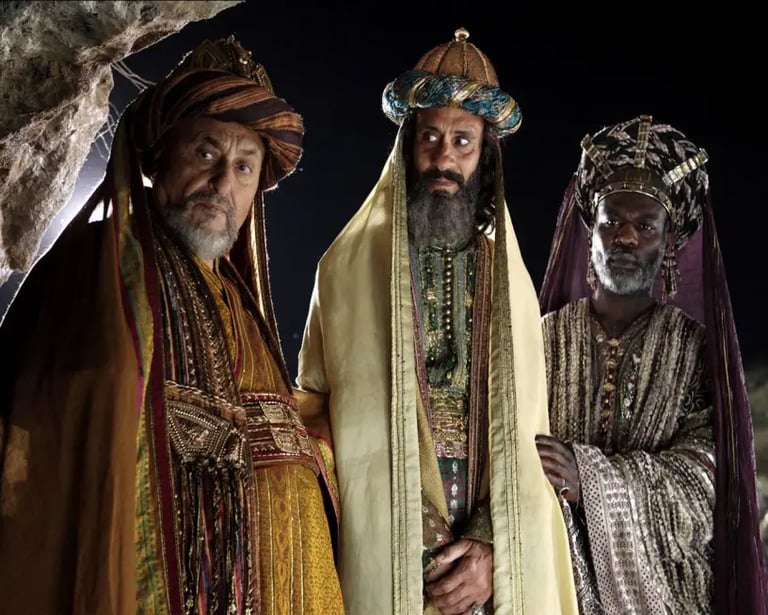

FAQ: Common Myths About the Wise Men
Q: How many Wise Men visited Jesus?
The Bible doesn’t specify a number; Matthew mentions only “wise men from the East.” Tradition settled on three, based on the gifts of gold, frankincense, and myrrh.
Q: Were the Wise Men really kings with the names Caspar, Melchior, and Balthazar?
No—the Bible gives no names or royal titles. Names and kingly status came from centuries of tradition, art, and medieval Christian storytelling.
Q: Did the Wise Men arrive at Jesus’ birth and follow a miraculous star?
Matthew suggests they came later, possibly when Jesus was a toddler. The “Star of Bethlehem” may have been natural or symbolic, guiding the Magi to honor the child.
Myth 1: There Were Only Three Wise Men
Myth 2: Their Names Were Caspar, Melchior, and Balthazar
Myth 4: They Visited Baby Jesus Immediately
Myth 5: They Came from the East (Exactly Where?)
Myth 6: The Star of Bethlehem Was a Supernatural Event
Myth 7: Gold, Frankincense, and Myrrh Were Ordinary Gifts

Introduction
Picture the Three Wise Men kneeling before the newborn Jesus in a quiet Bethlehem stable — a scene we’ve all seen on Christmas cards and in nativity plays. But how much of this beloved image is actually true? In this article, we’ll uncover seven of the biggest myths about the Magi, separating biblical fact from centuries of tradition. Since Matthew’s Gospel is the only scriptural account of the Wise Men, much of what we think we know comes from early church traditions, archaeology, and scholarly research. From camels to crowns, we’ll explore how these myths took shape and why they still influence modern celebrations. Get ready to see the Nativity story with fresh eyes!
Myth 1: There Were Only Three Wise Men
When we picture the Nativity, most of us immediately imagine three regal figures standing by the manger, their crowns gleaming and hands full of treasures. But did you know the Bible never actually tells us how many Magi there were?
The Biblical Text
Matthew’s Gospel is the only place in Scripture that speaks of these visitors, describing them simply as “wise men from the East” (Matthew 2). The text highlights their mission, their worship, and, of course, the gifts they carried—but it never specifies a number.
So, could it have been two? Or five? Or perhaps an entire caravan? The possibility is wide open. This ambiguity leaves room for both history and imagination, which is partly why the Magi have fascinated Christians for centuries.
Reflection Tip: Next time you set up your Nativity, pause to notice how many Wise Men are included. Does your set stick with three, or could you imagine a larger company making that long, desert journey?
Why Three Became Canonical
If the Bible doesn’t say, why do we almost always see three? The answer lies in the gifts: gold, frankincense, and myrrh. It seemed natural for early Christians to picture one giver per gift. Over time, this became the standard interpretation.
By the Middle Ages, artists were painting and sculpting three kings with distinct features, even giving them names—Caspar, Melchior, and Balthazar. These artistic choices shaped devotion and imagination so deeply that the “three kings” became a fixture of Christian tradition, even though Scripture itself leaves the number open.
The Historical Context
From a historical perspective, it makes sense to think of the Magi as traveling in a larger group. Wealthy figures from the East—whether Persian scholars, traders, or dignitaries—rarely traveled alone. Caravans were the norm, complete with attendants, guards, and animals to carry supplies.
Imagine the stir such a group would have caused as it entered Jerusalem. It wasn’t just a few strangers asking about a newborn king—it may have been an entire procession that caught Herod’s attention and the city’s curiosity.
Influence on Nativity Sets and Popular Culture
The tradition of “three” took firm root in Christian art, literature, and eventually in the everyday Nativity sets we treasure at Christmas. From stained-glass windows in medieval churches to Victorian Christmas cards, the image of three elaborately dressed kings became standard.
Today, nearly every family Nativity set includes three Wise Men, each with a gift in hand. This detail, while not strictly biblical, connects us to centuries of artistic devotion. It also reflects how Christian imagination has helped shape the best Nativity sets for families, blending Scripture with tradition to tell the story in a way that feels complete and meaningful.
Reflection Tip: When choosing or arranging your Nativity set, consider how cultural tradition and biblical truth weave together. There’s beauty in both the mystery of the unknown and the richness of artistic storytelling.
If you’d like to explore this tradition further, you might enjoy looking at Nativity sets that feature more than three Wise Men or even full caravan-style displays. They offer a fresh way to appreciate the depth of this beloved part of the Christmas story.
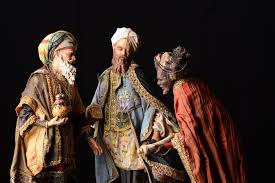

Myth 2: Their Names Were Caspar, Melchior, and Balthazar
Ask most people what the Wise Men were called, and you’ll likely hear the familiar trio: Caspar, Melchior, and Balthazar. These names feel so natural to the Nativity story that it’s easy to assume they’ve always been part of it. But in truth, the Bible never mentions names at all—those came centuries later, shaped by cultural traditions and imagination.
Origins of the Names
The earliest Christians knew the Magi simply as “wise men from the East.” Their identities were left mysterious, which may have been part of their wonder. It wasn’t until around the 6th century that the names Caspar, Melchior, and Balthazar began to appear in European writings and traditions.
Other Christian cultures, however, told the story differently. In Ethiopian, Syrian, and Armenian traditions, the Magi are remembered with completely different names. This variation reminds us that the Nativity was embraced across many lands, each adding its own voice to the mystery of these travelers.
Reflection Tip: If you collect Nativity sets, try exploring ones made in different parts of the world. You may notice that the Wise Men look distinct—or even carry different names—depending on the culture that produced them.
Why Names Became Popular
So why did Caspar, Melchior, and Balthazar become the standard in the West? Much of it had to do with medieval church plays, liturgies, and art. These dramatic retellings of the Nativity gave the Magi personalities, making the story more vivid and relatable for worshippers.
Over time, Christmas pageants, folklore, and even early hymns spread these names far and wide. By the Middle Ages, they were firmly established, woven into Christian imagination and devotion.
Cultural Adaptations
Names have power, and as the story of the Magi spread, different cultures shaped their traditions around them.
In Spain, the Wise Men became “Los Reyes Magos,” and the Feast of the Epiphany grew into one of the most beloved holidays of the year. Children eagerly await their gifts on January 6, and parades fill the streets with color and music.
In Latin America, the tradition blossomed too, with the Magi playing a central role in Epiphany celebrations. Parades, small gifts tucked into shoes, and community gatherings highlight the day.
In these cultures, the Wise Men aren’t just supporting characters in the Nativity—they’re central figures who carry both spiritual meaning and festive joy.
How Names Influence Nativity Traditions
Today, the names Caspar, Melchior, and Balthazar continue to shape the way we experience the Nativity. Whether it’s figurines labeled with their names, costumes in Christmas pageants, or children learning about their gifts in Sunday school, these titles give the Magi a sense of individuality.
Even modern Nativity sets for families often reflect this tradition, with three distinct Wise Men crafted to stand apart from one another. Some sets even include small inscriptions of their names, making the link between art and tradition feel complete.
Reflection Tip: When arranging your Nativity, try introducing each Wise Man to your children or guests by name. It’s a simple way to spark conversation about history, tradition, and how Christian imagination has brought the story to life in different ways.
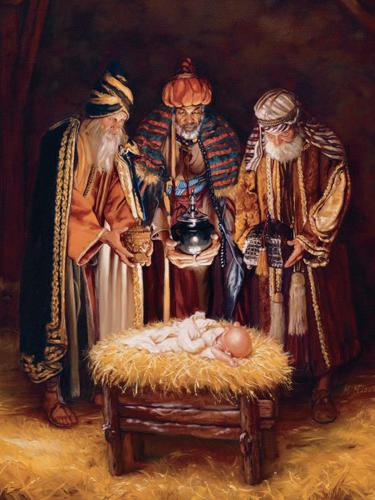

Myth 3: The Magi Were Kings
When most of us picture the Nativity, we imagine three regal figures bowing before the Christ child, crowns gleaming and robes flowing. It feels natural, almost unquestionable. Yet if we turn to the Bible itself, there is no reference to the Magi as kings. Matthew 2 introduces them simply as “wise men from the East,” leaving their social rank—and even their number—shrouded in mystery.
Biblical Basis
The idea that the Magi were kings emerged long after the Gospel was written. Early Christians interpreted the gifts—gold, frankincense, and myrrh—as evidence of wealth and nobility, and this association gradually evolved into the assumption that the travelers themselves were monarchs. But the Scripture never actually bestows this title.
Reflection Tip: When setting up your Nativity, consider how your Wise Men are depicted. Are they crowned rulers, or learned travelers? Both interpretations honor the story, but understanding the biblical basis adds depth to your display.
Historical Role of Magi
So, if they weren’t kings, who were they? Historical research suggests that the Magi were likely Zoroastrian priests, astrologers, or scholarly travelers from Persia. These were men deeply versed in astronomy and astrology, often serving as advisors to kings and nobles. Their expertise made them highly respected, which explains why Matthew emphasizes their wisdom and discernment rather than titles.
Traveling across deserts with valuable gifts, they were more like esteemed envoys or scholarly diplomats than monarchs. Imagining them as part of a caravan with attendants and guides brings the journey vividly to life, highlighting both the risks and dedication involved in seeking the newborn Messiah.
Artistic Representation
The image of the Magi as kings really took hold during the Middle Ages in Europe. Artists, aiming to convey the universality of Christ’s recognition, depicted the Wise Men in lavish robes, jeweled crowns, and exotic attire. In this way, the Magi became symbols of worldly power acknowledging spiritual authority.
Churches, manuscripts, and stained-glass windows immortalized this imagery, reinforcing it for generations. It’s a beautiful reminder of how art and devotion shape our understanding of scripture, even when the original text is silent on details.
Influence on Christian Doctrine and Worship
The portrayal of the Magi as kings has influenced not just art but Christian worship and traditions, including Epiphany celebrations. From stained-glass depictions to Nativity plays, these figures remind us that people from every corner and status level—scholars, rulers, travelers—can recognize and honor what is sacred.
Reflection Tip: When arranging your Nativity, consider the story the Magi tell in your display. Are they mysterious travelers, learned priests, or crowned kings? Each choice opens a window into both history and imagination, encouraging conversation and reflection among children and adults alike.
Even though Matthew’s account is brief, the richness of tradition invites us to engage creatively while remaining faithful to the heart of the story: the journey of wisdom and devotion to meet the Christ child.


Myth 4: They Visited Baby Jesus Immediately
One of the most common images we hold of the Nativity is of shepherds and Wise Men gathered around a newborn Jesus in a single, timeless moment. It’s beautiful, familiar, and perfect for a Nativity display—but it isn’t exactly what the Gospel accounts suggest.
Timeline in Matthew vs. Luke
The Gospels tell the story from different perspectives. Luke 2 paints a vivid picture of shepherds arriving that very night, rushing to see the newborn in a manger. By contrast, Matthew 2 refers to Jesus as a “child” rather than an infant, suggesting that the Magi arrived some time later.
This distinction matters. It reminds us that the journey of the Wise Men was not instantaneous—they traveled from the East, likely over weeks or even months, following the star and consulting their knowledge of the heavens.
Reflection Tip: When arranging your Nativity, consider separating the shepherds’ visit from the arrival of the Magi. Doing so can spark curiosity and conversation about the unfolding story and its historical layers.
Historical Clues
Herod’s decree to kill children “two years old and under” provides an important historical clue. Scholars interpret this as an attempt to cover the timeframe of the Magi’s journey, suggesting that Jesus may have been a toddler when they finally reached Bethlehem.
It’s fascinating to imagine this: the Wise Men arriving to find a young child already learning to walk, perhaps playing in the household, rather than a newborn in swaddling clothes. This perspective adds a human, relatable touch to the story, bridging sacred history and everyday life.
How Tradition Shortened the Timeline
Over centuries, artists and storytellers condensed these events for narrative and devotional purposes. Medieval paintings, church murals, and later Christmas cards often depict all figures together at the manger. It’s a powerful image that emphasizes unity, wonder, and reverence—but it smooths over the chronology.
Even today, most Nativity sets for families reflect this artistic choice. Seeing everyone gathered in one scene makes decorating simple and visually compelling, but knowing the historical context enriches our appreciation for each figure and their journey.
Archaeological & Cultural Context
Archaeology and cultural studies of 1st-century Bethlehem offer additional insights. Families often lived in modest stone homes or small communal dwellings, and stabling animals was sometimes done in adjoining rooms or caves. Traveling from the East would have required careful planning, guides, and provisions, making it unlikely that the Magi arrived within days of Jesus’ birth.
By considering these practical details—roads, terrain, and travel logistics—we gain a more vivid, realistic sense of the Wise Men’s dedication and determination. Their journey becomes more than a story; it’s a testament to faith, persistence, and devotion.
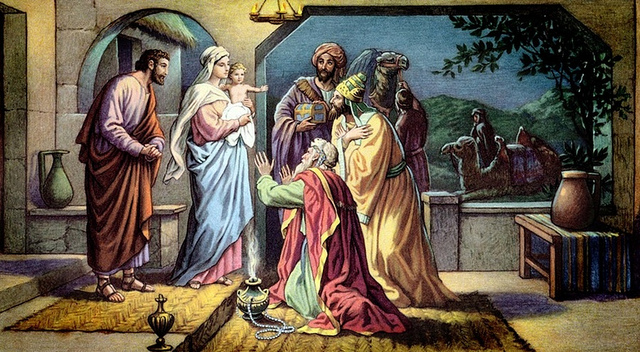

Myth 5: They Came from the East (Exactly Where?)
One of the most enduring mysteries of the Nativity is the question of where the Magi actually came from. Matthew’s Gospel tells us only that they were “wise men from the East,” leaving centuries of readers and scholars to wonder: was it Persia, Arabia, Babylonia, India—or somewhere else entirely?
Matthew’s Wording
The phrase “from the East” is intentionally vague. In the first century, “East” was a broad geographic term, encompassing lands beyond Judea that were known for learning, trade, and spiritual wisdom. Matthew doesn’t offer specifics, which has allowed tradition, legend, and imagination to fill in the blanks over the centuries.
Reflection Tip: When displaying your Nativity, remember that the Magi’s origin is as much about symbolism and universality as geography. They represent the world’s recognition of Christ, rather than a pinpointed location on a map.
Historical Guesses
Historians have pieced together several likely possibilities based on context:
Persia: Many scholars suggest the Magi were Zoroastrian priests, trained in astrology and astronomy, which explains their ability to interpret the star’s significance.
Babylonia: This region was a center of learning, especially in astronomy and mathematics. Wise travelers from Babylonia would have been highly respected for their scholarly expertise.
Arabia: Trade connections for frankincense and myrrh may have led some to speculate that the Magi came from Arabian lands, which were closely tied to the luxury goods mentioned in Matthew’s account.
India: Later Christian legends expanded the story, adding India as a possible origin, illustrating how the narrative grew as Christianity spread globally.
Each location reflects not only historical plausibility but also the Magi’s status as travelers of wisdom and wealth, whose journey required knowledge, resources, and courage.
Cultural Claims
Over time, various regions claimed the Magi as their own, and these traditions influenced art, costume, and storytelling. Medieval European paintings often portrayed them in exotic robes, turbans, and crowns, blending imagination with cultural interpretation. Even today, Nativity scenes and Epiphany celebrations in different countries showcase diverse representations, reminding us that the story transcends borders.
Reflection Tip: Consider exploring international Nativity sets. Seeing how artists from Spain, Ethiopia, or Latin America depict the Magi can be a fun and educational way to appreciate cultural diversity while honoring the story.
Symbolic Interpretation
Beyond geography, the Magi’s journey from the East carries rich symbolic meaning. They represent the known world coming to honor Christ, showing that His birth holds significance for all people, not just those in Judea. In this sense, “East” becomes less about a physical location and more about the reach and universality of faith.
It’s a wonderful reminder that every Nativity display is a conversation between history, tradition, and imagination. By appreciating both the ambiguity and the symbolism, we can share the story of the Magi in ways that are faithful, meaningful, and inspiring.
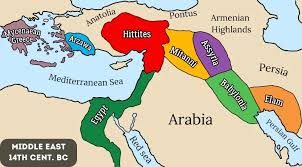

Myth 6: The Star of Bethlehem Was a Supernatural Event
Few images capture the imagination of the Nativity story like the Star of Bethlehem shining brightly over the manger. Many of us naturally think of it as a miraculous celestial phenomenon, a divine light guiding the Magi across deserts and mountains. But when we dig into both Scripture and history, the story is more layered—and even more fascinating.
Traditional Interpretation
For centuries, Christian tradition has embraced the star as a miraculous sign from God, announcing the birth of the Messiah to the Magi. It’s easy to see why: a brilliant, otherworldly light perfectly complements the awe and reverence of the Wise Men’s journey. This interpretation has inspired countless works of art, from medieval mosaics to stained-glass windows, where the star hovers over Bethlehem like a beacon of divine guidance.
Reflection Tip: When displaying your Nativity, consider adding a small glowing star above the scene. Even a simple light can evoke the wonder and symbolism that the Magi would have felt on their journey.
Scientific Theories
Over the years, astronomers and historians have explored possible natural explanations for the Star of Bethlehem, without diminishing its spiritual significance. Some theories include:
Planetary conjunctions: A rare alignment of planets, such as Jupiter and Saturn, could have created a bright, unusual light visible from afar.
Comets or supernovae: Celestial events like Halley’s Comet have been proposed, though timing and visibility remain debated.
Symbolic astronomical phenomena: Some scholars suggest the “star” may not have been a literal object at all, but a symbolic marker of divine intervention, interpreted by the Magi through their study of the heavens.
Each theory offers a fascinating window into how the natural world and spiritual meaning can intertwine. The Magi, skilled in astronomy and astrology, would have been attuned to unusual celestial events, whether miraculous or naturally occurring, and understood them as messages of profound significance.
Religious and Cultural Interpretations
Beyond science, the star has always carried symbolic weight. It represents light breaking into darkness, hope appearing in the night, and the universality of Christ’s birth. Artists and theologians over centuries have used the star to convey these themes, from golden rays in Renaissance paintings to glittering mosaics in ancient churches. Its presence in Nativity art reminds viewers that the story of Jesus is meant to shine across time, cultures, and generations.
Reflection Tip: Invite children to notice the star in your Nativity set and discuss its meaning. It’s a chance to blend wonder, history, and faith, showing that symbols often carry layered stories that enrich our understanding.


Myth 7: Gold, Frankincense, and Myrrh Were Ordinary Gifts
When we think of the gifts the Magi brought to Jesus, it’s easy to imagine a simple offering of gold coins, incense, and perfume—ordinary items, chosen more out of politeness than meaning. But in truth, these gifts were anything but ordinary. Each carried profound symbolism, immense value, and cultural significance that would have made the Wise Men’s presentation extraordinary in every sense.
Symbolism of Each Gift
Each gift is rich in meaning, both practical and spiritual:
Gold signified kingship and wealth, honoring Jesus as the newborn King. It wasn’t just a precious metal; it was a statement of recognition for His royal authority.
Frankincense symbolized divinity and worship. Used in temple rituals, its fragrant smoke represented prayers rising to God. Presenting it to a child was a way of acknowledging His sacred role.
Myrrh, often used for anointing and embalming, foreshadowed mortality and suffering, hinting at Jesus’ future sacrifice and human vulnerability.
Reflection Tip: When setting up your Nativity, take a moment to reflect on each gift’s symbolism. It adds depth to the display and opens a gentle conversation about faith, devotion, and the layers of meaning in the story.
Cultural & Historical Context
In 1st-century trade networks, these items were incredibly rare and valuable. Gold traveled from mines far beyond Judea, frankincense came from Arabia, and myrrh often journeyed from distant regions like India or East Africa. The logistics of acquiring, transporting, and presenting such gifts underscore the effort, wealth, and intent behind the Magi’s journey.
This perspective reminds us that the gifts weren’t casual offerings—they were carefully chosen treasures, designed to honor a child who would change the world. Imagine the caravan navigating deserts and trade routes, carrying these precious items over hundreds of miles. The effort alone speaks volumes about the reverence and devotion of the Magi.
Artistic Representation
Artists through the centuries have highlighted the gifts’ significance in creative ways. Medieval paintings often exaggerate the splendor of gold, the smoke of frankincense, and the beauty of myrrh jars. Renaissance art brought more realism, showing detailed containers and the careful presentation of each offering. Even in modern Nativity sets for families, the gifts are depicted with care, often scaled and colored to draw attention to their value and meaning.
These artistic choices remind us that the story of the Magi isn’t just historical—it’s a visual and spiritual lesson that continues to inspire wonder.
Religious Teachings
Church Fathers and theologians have long explored the theological significance of these gifts. They interpreted gold as honoring Christ’s kingship, frankincense as a recognition of His divinity, and myrrh as a prophetic symbol of His passion and mortality. Even today, these teachings enrich Advent reflections, Epiphany celebrations, and family discussions around the Nativity.
Reflection Tip: Consider incorporating small educational elements into your Nativity display. A simple note or conversation about what each gift represents can help children and guests see the story in a deeper, more meaningful way.
For families looking to enhance this aspect of the Nativity, consider sets that include detailed Magi figurines with distinct gift offerings. They provide a tangible way to explore history, symbolism, and faith all at once, making the story of gold, frankincense, and myrrh come alive for all ages.
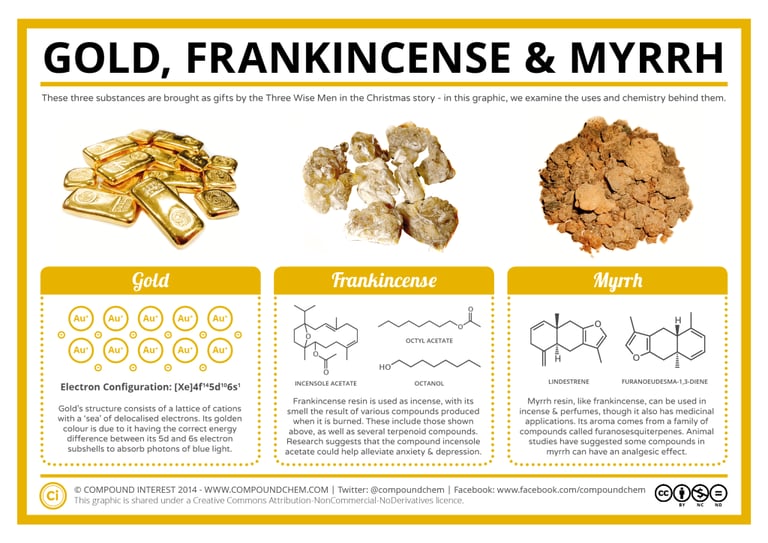

How These Myths Influence Nativity Scenes and Traditions
It’s fascinating to see how centuries of tradition, imagination, and interpretation have shaped the Nativity scenes we display today. From figurines to pageants, these myths about the Magi influence everything from design choices to cultural celebrations.
Figurines and Props
Most Nativity sets for families include exactly three Wise Men, a reflection of the gifts—gold, frankincense, and myrrh—rather than a literal biblical count. Artists and craftsmen have long drawn on these stories to give each Magi distinct robes, crowns, and even accompanying animals, creating rich visual diversity.
Across cultures, you’ll find remarkable variations: in some European sets, the Magi are depicted in elaborate robes and crowns; in Latin American sets, they may carry local garments or gifts that reflect regional tradition. These adaptations illustrate how myth and culture intertwine, helping the Nativity feel both universal and personal.
Reflection Tip: When choosing or arranging your Nativity, consider mixing figurines from different traditions. It can spark conversation about cultural interpretation and the ways families across the world honor the Magi.
Pageants and Plays
Christmas pageants and Nativity plays are another place where these myths take center stage. The idea of three distinct Wise Men with named gifts provides structure and familiarity, making storytelling accessible for children and communities.
Yet local traditions often add unique touches—costumes, music, and dialogue—that reflect regional culture while keeping the biblical narrative intact. Whether it’s a small parish performance or a grand city pageant, the blend of myth, history, and imagination creates a living tradition that engages audiences of all ages.
Broader Cultural Influence
Beyond figurines and performances, these myths have shaped broader cultural expressions. Music, literature, and visual arts all draw on the imagery of the Magi: the three kings journeying under a star, bearing precious gifts, and crossing deserts to honor the Christ child.
Festivals like Epiphany or Three Kings Day in Europe and Latin America are direct reflections of these traditions, celebrating the Magi’s visit with parades, music, and gift-giving. These events show how myths, while not always historically exact, have inspired rituals and art that bring communities together and keep the Nativity story vibrant year after year.
Reflection Tip: Consider sharing stories about your Nativity scene with family or guests, highlighting how history, art, and tradition influenced the display. Doing so connects the physical scene to a broader narrative that spans centuries and continents, enriching everyone’s appreciation of the Christmas story.
By understanding these myths and their influence, we can see our Nativity scenes not just as decorations, but as windows into history, culture, and devotion—inviting reflection, learning, and connection across generations.

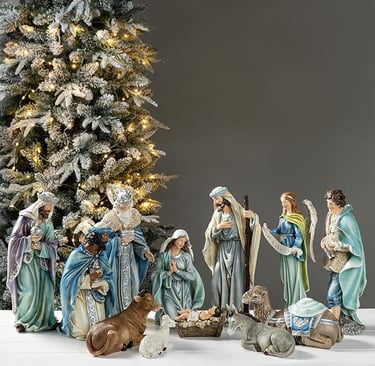
Conclusion
Exploring these Nativity myths reminds us that the story of the Magi is both historical and richly interpreted through centuries of tradition. While the Bible offers key details, much of what we “know” about the Wise Men—their number, names, royal status, or exact timing—comes from artistic imagination, cultural storytelling, and devotional practices.
As you set up your Nativity scene, plan a church display, or share family celebrations, take a moment to notice how faith, history, and culture converge, creating a meaningful, multilayered story for all who experience it.
